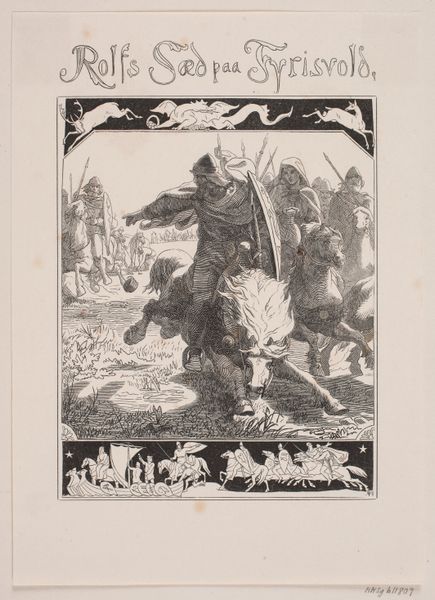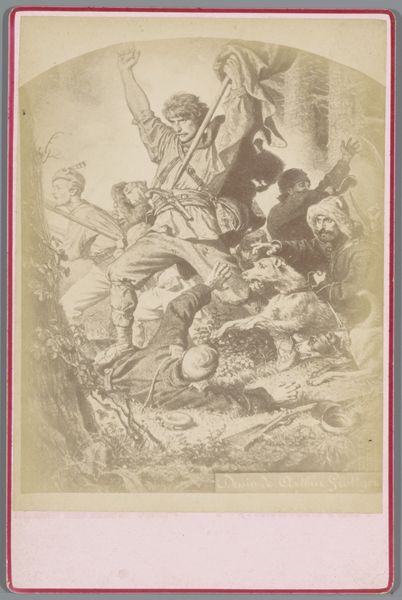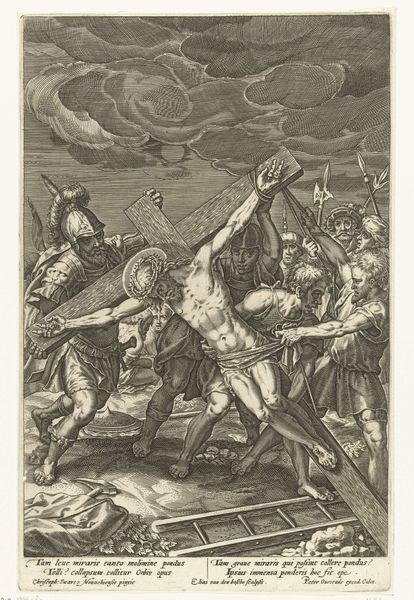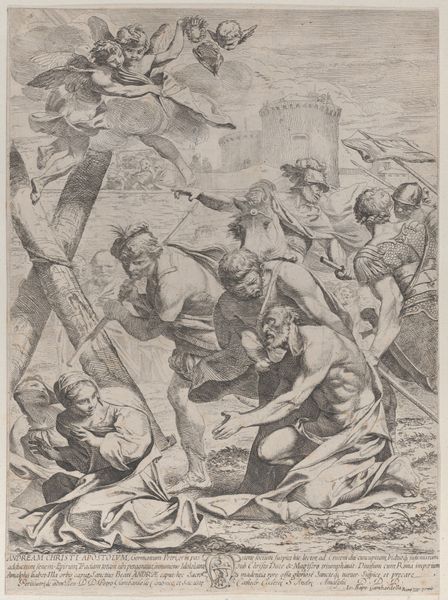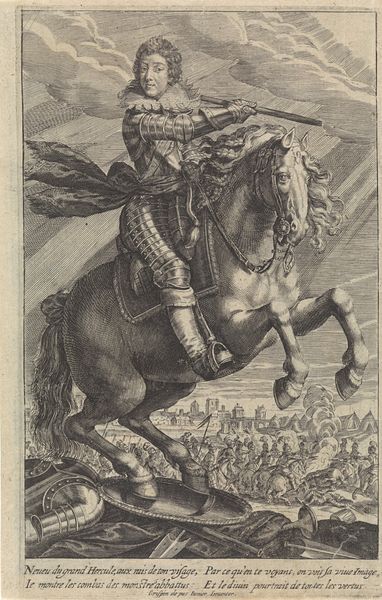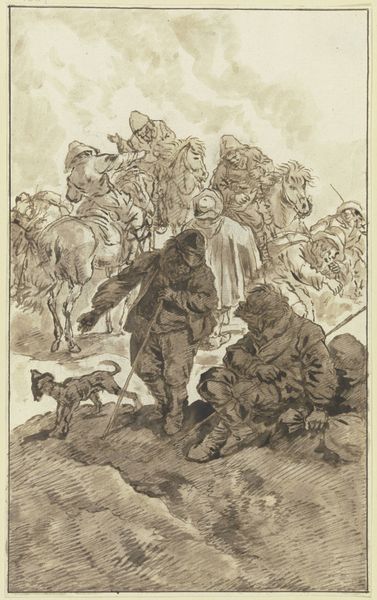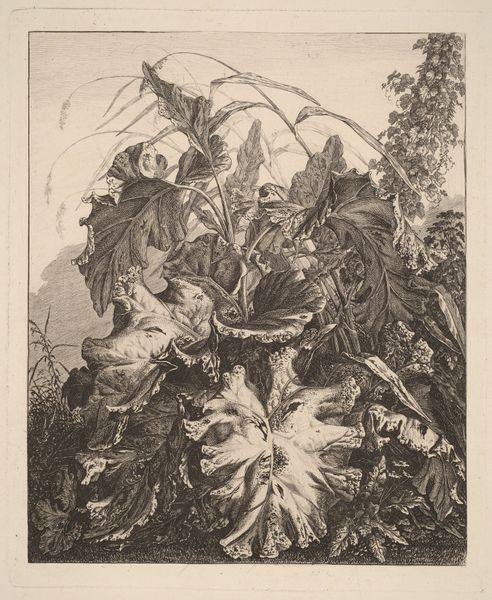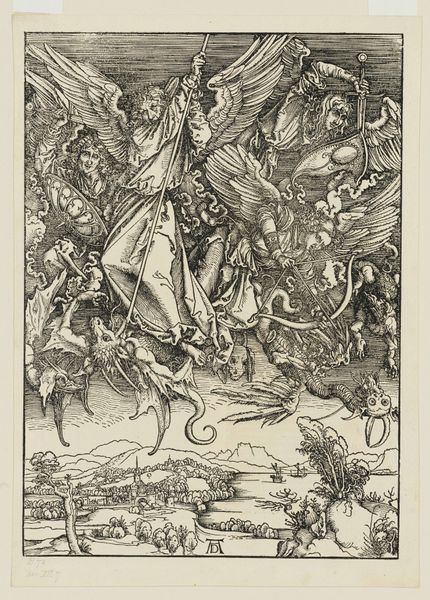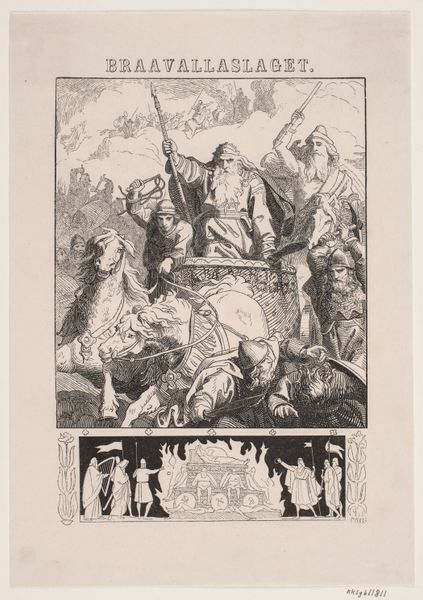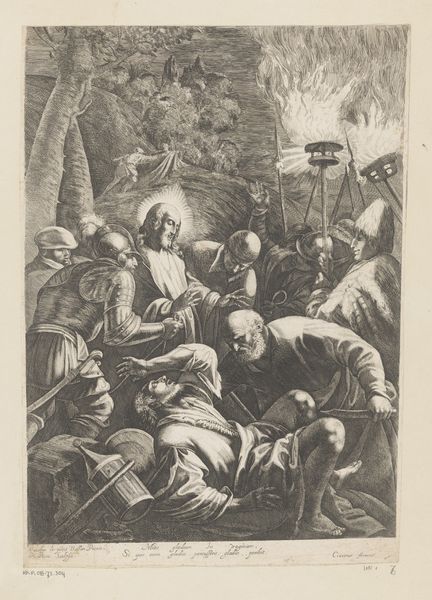
print, woodcut, engraving
#
narrative-art
# print
#
old engraving style
#
landscape
#
figuration
#
woodcut
#
line
#
history-painting
#
engraving
Dimensions: 171 mm (height) x 121 mm (width) (bladmaal)
Curator: This print by Södergren, made in 1852, is titled "Rolf sad på Fyrisvold." It's held here at the SMK, the National Gallery of Denmark. I'm struck by the way the stark lines create a really theatrical, almost feverish atmosphere. Editor: It's really striking how dramatic it is! And small—intimate, even, given the epic nature of what I assume is depicted. The furious energy in those lines does create a sense of urgency. I see themes of history painting here, maybe something about the importance of national narratives? Curator: Precisely! It’s a woodcut or engraving, I’d lean toward the latter; the medium lends itself perfectly to depicting these kinds of sagas, don't you think? This work draws on the ancient Scandinavian sagas of Rolf Kraki—focusing on ideas of loyalty, betrayal, and legendary leadership. It presents a very particular, nineteenth-century reading of that history, of course. Editor: A decidedly heroic reading, from what I gather. Is "Fyrisvold" a significant place? It's the Swedish plains right? A traditional site of power struggles? And you can clearly see how the visual language here seeks to create heroes—masculine power displayed openly. How much did national romanticism play into the artist's vision? Curator: Enormously. Södergren, and his contemporaries, were working during a period of intense national romanticism. They were looking to the past to build a sense of shared cultural identity, particularly emphasizing Viking heritage. "Fyrisvold," with its historical weight, becomes a stage for constructing ideals of nationhood, for better or worse. The composition emphasizes that heroic individual leading the charge. There are no vulnerable identities depicted here; no women, children or elderly—just warriors. Editor: It's interesting to see how the historical context shapes not just the subject matter but also the style. The medium reinforces the message and reflects 19th-century anxieties. In those frantic lines, there's a lot to consider about constructed ideals and masculine power in art, what they represented then, and the power dynamics such idealized notions can create today. Curator: I agree completely. It speaks to the enduring need to critically examine our historical narratives, both visually and intellectually. Thank you. Editor: Thank you! It leaves me thinking about whose stories get told and by whom and for what purpose! A crucial, complex subject!
Comments
No comments
Be the first to comment and join the conversation on the ultimate creative platform.
